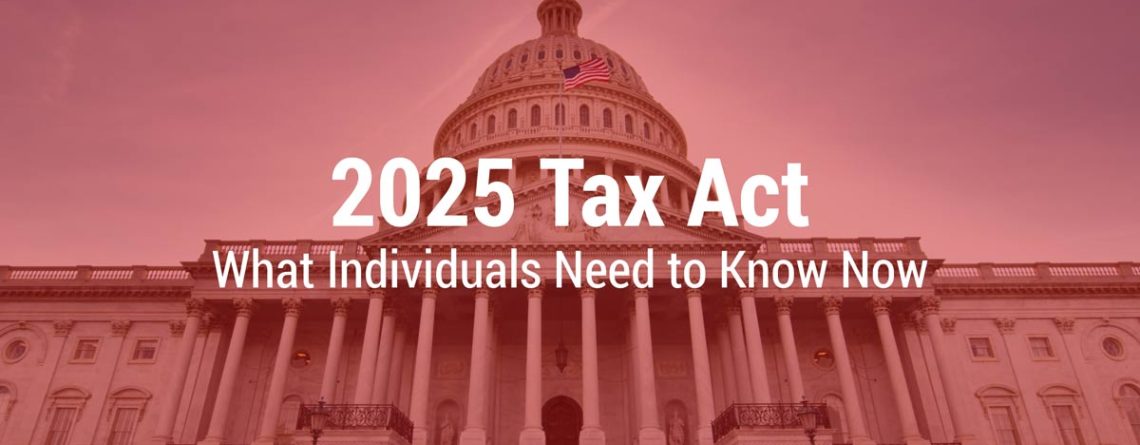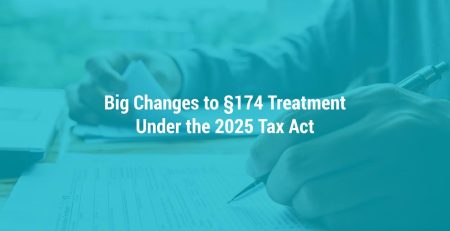2025 Tax Act: What Individuals Need to Know Now
As Congress approved the 2025 tax legislation—frequently dubbed the “One Big Beautiful Bill” (OBBB)—some meaningful shifts now apply to individual taxpayers. Below is a high-level guide to the new rules, a side-by-side of standard vs. itemized approaches, and proactive steps you can take to manage your tax liability.
Key Highlights for 2025
Permanent Lower Tax Rates and Wider Brackets
The lower marginal rate structure enacted under the Tax Cuts and Jobs Act (TCJA), which had been scheduled to expire at the end of 2025, is now extended. In addition, an extra round of inflation indexing is applied to most brackets (except the top)
- The rates remain at 10%, 12%, 22%, 24%, 32%, 35%, and 37%.
- Bracket thresholds will continue to be adjusted annually for inflation, using the Chained Consumer Price Index (C-CPI-U).
2025 Tax Brackets and Federal Income Tax Rates | Tax Foundation |
|||
Tax Rate |
For Single Filers |
For Married Individuals Filing Joint Returns |
For Heads of Households |
10% |
$0 to $11,925 |
$0 to $23,850 |
$0 to $17,000 |
12% |
$11,925 to $48,475 |
$23,850 to $96,950 |
$17,000 to $64,850 |
22% |
$48,475 to $103,350 |
$96,950 to $206,700 |
$64,850 to $103,350 |
24% |
$103,350 to $197,300 |
$206,700 to $394,600 |
$103,350 to $197,300 |
32% |
$197,300 to $250,525 |
$394,600 to $501,050 |
$197,300 to $250,500 |
35% |
$250,525 to $626,350 |
$501,050 to $751,600 |
$250,500 to $626,350 |
37% |
$626,350 or more |
$751,600 or more |
$626,350 or more |
Standard Deduction vs. Itemized Deductions: High-Level Summary
Standard Deduction
The standard deduction is a fixed dollar amount that reduces your taxable income. It is available to all taxpayers (unless you’re married filing separately and your spouse itemizes).
2025 Standard Deduction Amounts (under new tax law):
- Single / Married Filing Separately: $15,750
- Married Filing Jointly / Qualifying Widow(er): $31,500
- Head of Household: $23,625
- Additional deduction if 65 or older or blind:
- $2,000 for single or head of household
- $1,600 per person for married taxpayers
When to use it:
- You have few deductible expenses
- Your itemized deductions are less than the standard deduction
Itemized Deductions
Itemizing allows you to deduct actual eligible expenses rather than taking the standard deduction. You’ll use Schedule A (Form 1040) to list and total these deductions.
Navigating these new tax changes can be complex—but the potential savings are substantial.
Common Expenses You Can Itemize:
| Category |
What Can Be Deducted |
Limits or Notes |
|---|---|---|
Medical & Dental Expenses |
Out-of-pocket medical/dental costs |
Only the amount that exceeds 7.5% of your AGI |
State & Local Taxes (SALT) |
Income or sales taxes + property taxes |
Capped at $40,000 in 2025 ($20,000 if MFS); phase-out begins at $500,000 income |
Mortgage Interest |
Interest on loans secured by your home |
Subject to loan limits ($750k or $1M depending on year of loan) |
Charitable Contributions |
Cash or property donations to qualified charities |
Generally limited to 60% of AGI for cash gifts. New 0.5% floor limit introduced in 2025 Tax Act. |
When to itemize:
- Your deductible expenses exceed the standard deduction
- You’ve had high medical bills, own a home, pay large state taxes, or make significant charitable donations
Standard Deduction vs. Itemized: A Side-by-Side
Here’s a simplified comparison to help you decide whether to take the standard deduction or itemize in 2025.
| Feature |
Standard Deduction Route |
Itemized Deductions Route |
|---|---|---|
Ease / administrative burden |
Very simple: no schedules needed beyond basic return |
More recordkeeping and substantiation needed (mortgage interest, charitable gifts, medical, SALT, etc.) |
Break-even threshold |
If your total itemizable deductions exceed the standard deduction, itemizing might pay off |
If itemized deductions < standard deduction, you lose “extra” benefit |
Suitability |
Best for taxpayers with limited deductions or those who “don’t have enough” to itemize |
Best for taxpayers with high mortgage interest, charitable contributions, state taxes, large medical costs, etc. |
Summary & What to do Next
- The 2025 tax regime continues much of the TCJA structure but with enhancements in standard deduction.
- Many taxpayers who used to itemize may now prefer the standard deduction — but for high-deduction individuals, itemizing still can pay off.
- Early modeling and strategic timing are even more important now.
- Use this transitional year (2025) as an opportunity to re-evaluate your deduction strategy, income timing, and planning toward retirement and charitable goals.
Hungerford is Here to Help
Navigating these new tax changes can be complex—but the potential savings are substantial. Reach out to Hungerford today to learn exactly how the 2025 changes will affect your situation and to develop a personalized tax strategy that maximizes your benefits.
Disclaimer: This blog post is for informational purposes only and does not substitute for personalized advice. Please consult your tax professional for guidance tailored to your situation.











